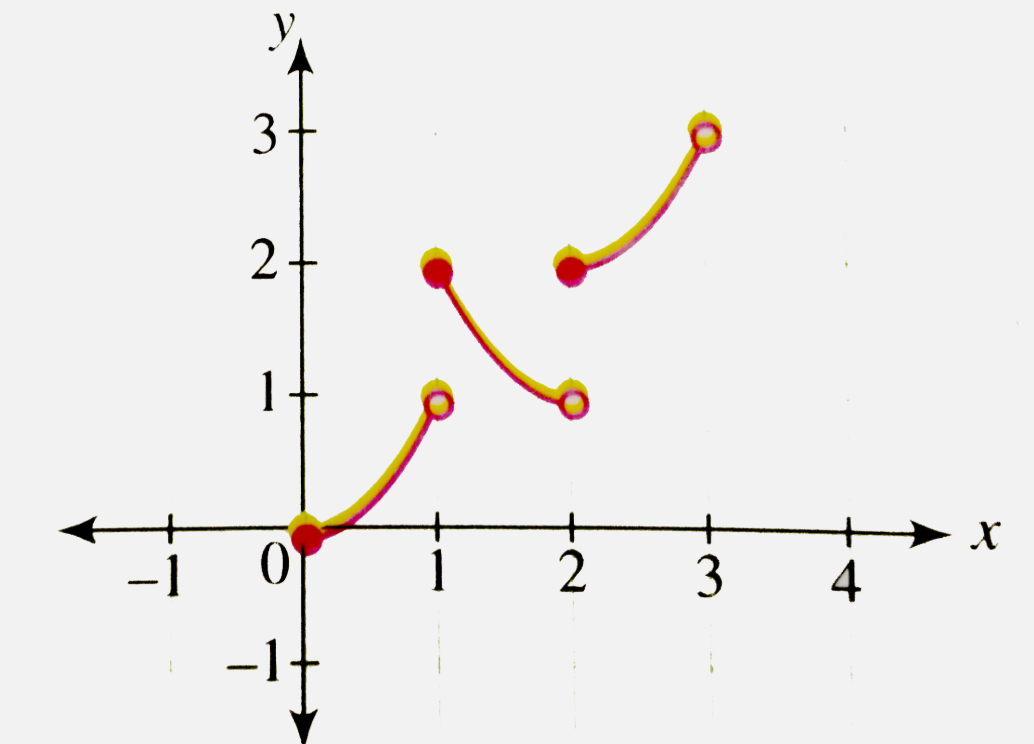Letf:[−∞,0]→[1,∞) be defined as f(x)=(1+√−x)−(√−x−x), thenSolution in Tamil
injective but not surjective
injective as well as surjective
neither injective nor surjective
surjective but injective
The correct Answer is:B
f(x)=(1+√−x)−(−√−x−x)
=1−x,x≤0
Then 1−x≥1.
Hence function is injective and surjective.
Topper's Solved these Questions
- BOOK - CENGAGECHAPTER - FUNCTIONSEXERCISE - Multiple Correct Answers Type10videos
FUNCTIONS
- BOOK - CENGAGECHAPTER - FUNCTIONSEXERCISE - Comprehension Type7videos
FUNCTIONS
- BOOK - CENGAGECHAPTER - EQUATION OF PLANE AND ITS APPLICATIONS -IIEXERCISE - DPP 3.418videos
EQUATION OF PLANE AND ITS APPLICATIONS -II
- BOOK - CENGAGECHAPTER - GETTING STARTED WITH GRAPHSEXERCISE - Exercise18videos
GETTING STARTED WITH GRAPHS
Similar Questions
The function f(x)=cos−1⎛⎝2[|sinx|+|cosx|]sin2x+2sinx+114⎞⎠ is defined if x belongs to (where [.] represents the greatest integer function)
04:01View SolutionLet f(x)=x2−2x−1∀x∈R Let f:(−∞,a]→[b,∞), where a is the largest real number for which f(x) is bijective. If f:R→R , g(x)=f(x)+3x−1 , then the least value of function y=g(|x|) is
08:22View SolutionLet A(0,6,6), B(6,6,0) and C(6,0,6) are three points and point D is moving on the line x+z−3=0=y. If G is centroid of ΔABC, then minimum value of GD is
02:27View SolutionDoes the following graph pass the vertical or horizontal line test ?
 03:18View Solution
03:18View SolutionLet f:[-oo,0]rarr[1,oo) be defined as f(x)=(1+sqrt(-x))-(sqrt(-x)-x), then
03:42View SolutionLet f(x) be a non-constant twice differentiable function defined on (oo,oo) such that f(x)=f(1-x) and f'(1/4)=0^(@). Then
03:24View SolutionLet f:[4,∞)→[4,∞) be defined by f(x)=5x(x−4).Then f−1(x) is
05:40View SolutionLet f:(−∞,2]→(−∞,4] be a function defined by f(x)=4x−x2. Then, f−1(x) is
View SolutionIf f:[1,∞)→[1,∞) is defined by f(x)=2x(x−1) then find f−1(x).
04:08View SolutionIf f:[1,∞)→[1,∞] is defined by
f(x)=1+√1+4log2x2, then f−1(3)=05:42View SolutionIf f:[0,∞)→[0,∞) is defined by f(x)=x1+x, then f is
02:26View SolutionIf f:[1.∞]→[1.∞] is defined by f(x)=1+√1+4log2x2 then f−1(3)=
04:29View SolutionLet a function f:(0,∞)→[0,∞) be defined by f(x)=∣∣∣1−1x∣∣∣. Then f is
02:13View Solutionमाना एक फलन f:(0,∞)→(0,∞)f(x)=∣∣∣1−1x∣∣∣ द्वारा परिभाषित है, तो f
05:42View SolutionLet f(0,∞)→(−∞,∞) be defined as f(x)=ex+lnx and g=f−1, then find the g'(e).
03:03View SolutionLet f(x) be a non-constant twice differentiable function defined on (∞,∞) such that f(x)=f(1−x) and f"(1/4) = 0. Then
02:59View Solution

